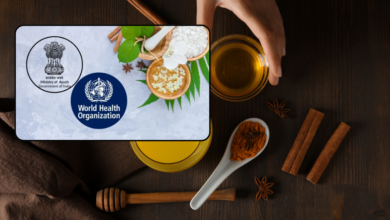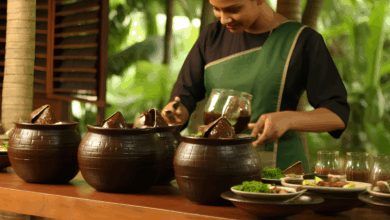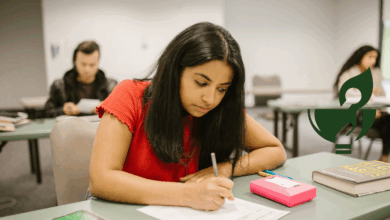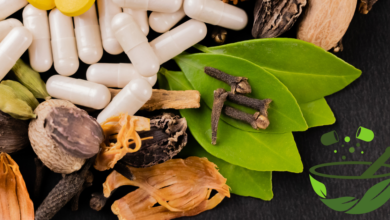Madras High Court traced historical evidences of Siddha & Ayurveda
 Disposing of a batch of writ petitions relating to Government Siddha Medical College in Tirunelveli district as well as Government Ayurveda Medical College in Kanyakumari district, Justice V. Ramasubramanian of Madras High Court traced various historical instances which according to him, if ignored, “would put the indigenous systems of medicine in the Intensive Care Unit and that too in an allopathic hospital.” According to him, the history of Ayurveda and Siddha dated back to several centuries. Literally meaning the ‘science of life,’ Ayurveda was often used in a narrow sense as a ‘system of medicine,’ a connotation which considerably diluted and distorted its real scope and objective. Health, according to Ayurveda, was not only freedom from disease. Susruta, one of the great early Ayurveda practitioners, had termed it to be a state of the individual where, in addition to harmony among the functional units (dosas), digestive and metabolic mechanisms (agnis), structural elements (dhatus), and waste products (malas), a person should also be in an excellent state (prasanna) of the spirit (atman), senses (indriyas), and mind (manas). The Encyclopaedia Britannica states that Ayurvedic practitioners work in rural areas, providing healthcare to at least five million people in the country. It also points out that the golden age of Indian medicine from 800 B.C. to 1000 A.D. was marked by the production of medical treatises known as ‘caraka-samhita’ and ‘susruta-samhita.’ In surgery, ancient Hindu medicine reached its zenith. Operations performed by Hindu surgeons included excision of tumours, incision and draining of abscesses, punctures to release fluid in the abdomen, extraction of foreign bodies, repair of anal fistulas, splinting of fractures, amputations, caesarean sections, and stitching of wounds. A broad array of surgical instruments was used. According to Susruta, a surgeon should be equipped with 20 sharp and 101 blunt instruments of various descriptions. The instruments were largely of steel. Alcohol seemed to have been used as a narcotic during operations and bleeding was stopped with hot oils and tar. Hindu surgeons also operated on cataracts by couching or displacing the lens to improve vision. The judge also pointed out that a book titled ‘Man and Medicine – A History’ authored by Farokh Erach Udwadia, an Emeritus Professor of Medicine (Allopathy), talked about an interesting event about the documented performance of rhinoplasty (for which Susruta was famous) witnessed and recorded in 1793 in Pune. A Parsee gentleman by name Cowasjee who was serving the English Army at the time of the Mysore War in 1792 was captured by soldiers of Tipu Sultan, the erstwhile ruler of Mysore. His nose and hand was cut off. He and three of his friends, who had met with the same fate, consulted an individual who was only a bricklayer by profession. The bricklayer performed a surgery, which was witnessed by Thomas Cruso and James Findlay, Senior British Surgeons in Bombay Presidency. They described and drew the skin graft procedure and the same was published in the Madras Gazette. It was later reproduced in the October 1794 issue of the Gentleman’s Magazine of London. The occurrence caught the attention of J.C. Carpue, a 30-year-old surgeon in London. He successfully used the same skin graft procedure for nose repair on a patient in 1814. He reported his successful results in 1816, introducing the ‘Hindu Surgical Technique’ and with it ‘The Indian Nose’ to the West. Even Susruta had recommended the use of facial skin flap for repair of cleft lip. Similarly, the Siddha System of Medicine also has a history which dates back to several centuries. Traditionally believed to have been developed by 18 Siddhas including Sage Agasthiya, the Siddha System had its own merits. “But unfortunately, due to lack of patronage for the culture of the ancient times, this system of Medicine also suffered to a great extent under the colonial rule,” the judge said. He recalled that C.N. Deivanayagam, an allopathy doctor and a Fellow of the Royal College of Physicians (Edinburgh), who retired as Superintendent of Government Hospital of Thoracic Medicine, Tambaram, presented a paper titled ‘HIV/AIDS and Siddha System of Healthcare – an experience of 13 years’ highlighting the effectiveness of Siddha formulations. According to the doctor, there was an exponential increase in the number of HIV sufferers seeking care and treatment ever since the Tambaram Government Hospital adopted an open door policy for HIV/AIDS in 1992. While there were only two patients in 1993, the number rose up to 365 in 1996 and 6,791 in the year 2000. ARV Drugs could not be provided by the Government to all the patients, hence the hospital invited 90 Siddha physicians to a seminar to identify suitable Siddha formulations to combat the killer disease. All of them agreed on formulations containing processed Sulphur and processed Mercury to fight the disease. As a consequence, a formulation known as RAN was born as the child of Tambaram. The acronym RAN stood for Rasagandhi Mezhugu, Amukkura Chooranam and Nellikkai Ilagam. It had become an immunogenic and adaptogenic drug. The medical practitioners demonstrated through laboratory evidence that there was clinical improvement in more than 60 per cent of the patients who received either RAN alone or in combination with other drugs. Further, in 1995, Padma Srinivasan, a Senior Research Officer at the Indian Institute of Health Management Research had presented a paper in the World Health Forum pointing out that the traditional systems of medicine were gradually replaced by modern medicine during the 19 and firth half of 20 century under the influence of the British Raj. The, provincial Governments and popular leaders such as Mahatma Gandhi made various efforts to reverse this trend. But unfortunately, the country’s first National Healthcare Policy outlined in 1946 by Bhore Committee completely ignored the traditional practices. Subsequent Committees attempted to correct this error but in vain. In 1961, the Mudaliar Committee made strong recommendations for integrating modern medicine with the traditional medicine. But by that time, the dominance of modern medicine had become irreversible. “At present, most of the larger institutions promoting indigenous systems of medicine are controlled and financed by the State Governments, and little interest shown at the central level. “This is probably because the Central Government depends on support for healthcare from international organisations backed by rich Western countries,” the author had concluded.
Disposing of a batch of writ petitions relating to Government Siddha Medical College in Tirunelveli district as well as Government Ayurveda Medical College in Kanyakumari district, Justice V. Ramasubramanian of Madras High Court traced various historical instances which according to him, if ignored, “would put the indigenous systems of medicine in the Intensive Care Unit and that too in an allopathic hospital.” According to him, the history of Ayurveda and Siddha dated back to several centuries. Literally meaning the ‘science of life,’ Ayurveda was often used in a narrow sense as a ‘system of medicine,’ a connotation which considerably diluted and distorted its real scope and objective. Health, according to Ayurveda, was not only freedom from disease. Susruta, one of the great early Ayurveda practitioners, had termed it to be a state of the individual where, in addition to harmony among the functional units (dosas), digestive and metabolic mechanisms (agnis), structural elements (dhatus), and waste products (malas), a person should also be in an excellent state (prasanna) of the spirit (atman), senses (indriyas), and mind (manas). The Encyclopaedia Britannica states that Ayurvedic practitioners work in rural areas, providing healthcare to at least five million people in the country. It also points out that the golden age of Indian medicine from 800 B.C. to 1000 A.D. was marked by the production of medical treatises known as ‘caraka-samhita’ and ‘susruta-samhita.’ In surgery, ancient Hindu medicine reached its zenith. Operations performed by Hindu surgeons included excision of tumours, incision and draining of abscesses, punctures to release fluid in the abdomen, extraction of foreign bodies, repair of anal fistulas, splinting of fractures, amputations, caesarean sections, and stitching of wounds. A broad array of surgical instruments was used. According to Susruta, a surgeon should be equipped with 20 sharp and 101 blunt instruments of various descriptions. The instruments were largely of steel. Alcohol seemed to have been used as a narcotic during operations and bleeding was stopped with hot oils and tar. Hindu surgeons also operated on cataracts by couching or displacing the lens to improve vision. The judge also pointed out that a book titled ‘Man and Medicine – A History’ authored by Farokh Erach Udwadia, an Emeritus Professor of Medicine (Allopathy), talked about an interesting event about the documented performance of rhinoplasty (for which Susruta was famous) witnessed and recorded in 1793 in Pune. A Parsee gentleman by name Cowasjee who was serving the English Army at the time of the Mysore War in 1792 was captured by soldiers of Tipu Sultan, the erstwhile ruler of Mysore. His nose and hand was cut off. He and three of his friends, who had met with the same fate, consulted an individual who was only a bricklayer by profession. The bricklayer performed a surgery, which was witnessed by Thomas Cruso and James Findlay, Senior British Surgeons in Bombay Presidency. They described and drew the skin graft procedure and the same was published in the Madras Gazette. It was later reproduced in the October 1794 issue of the Gentleman’s Magazine of London. The occurrence caught the attention of J.C. Carpue, a 30-year-old surgeon in London. He successfully used the same skin graft procedure for nose repair on a patient in 1814. He reported his successful results in 1816, introducing the ‘Hindu Surgical Technique’ and with it ‘The Indian Nose’ to the West. Even Susruta had recommended the use of facial skin flap for repair of cleft lip. Similarly, the Siddha System of Medicine also has a history which dates back to several centuries. Traditionally believed to have been developed by 18 Siddhas including Sage Agasthiya, the Siddha System had its own merits. “But unfortunately, due to lack of patronage for the culture of the ancient times, this system of Medicine also suffered to a great extent under the colonial rule,” the judge said. He recalled that C.N. Deivanayagam, an allopathy doctor and a Fellow of the Royal College of Physicians (Edinburgh), who retired as Superintendent of Government Hospital of Thoracic Medicine, Tambaram, presented a paper titled ‘HIV/AIDS and Siddha System of Healthcare – an experience of 13 years’ highlighting the effectiveness of Siddha formulations. According to the doctor, there was an exponential increase in the number of HIV sufferers seeking care and treatment ever since the Tambaram Government Hospital adopted an open door policy for HIV/AIDS in 1992. While there were only two patients in 1993, the number rose up to 365 in 1996 and 6,791 in the year 2000. ARV Drugs could not be provided by the Government to all the patients, hence the hospital invited 90 Siddha physicians to a seminar to identify suitable Siddha formulations to combat the killer disease. All of them agreed on formulations containing processed Sulphur and processed Mercury to fight the disease. As a consequence, a formulation known as RAN was born as the child of Tambaram. The acronym RAN stood for Rasagandhi Mezhugu, Amukkura Chooranam and Nellikkai Ilagam. It had become an immunogenic and adaptogenic drug. The medical practitioners demonstrated through laboratory evidence that there was clinical improvement in more than 60 per cent of the patients who received either RAN alone or in combination with other drugs. Further, in 1995, Padma Srinivasan, a Senior Research Officer at the Indian Institute of Health Management Research had presented a paper in the World Health Forum pointing out that the traditional systems of medicine were gradually replaced by modern medicine during the 19 and firth half of 20 century under the influence of the British Raj. The, provincial Governments and popular leaders such as Mahatma Gandhi made various efforts to reverse this trend. But unfortunately, the country’s first National Healthcare Policy outlined in 1946 by Bhore Committee completely ignored the traditional practices. Subsequent Committees attempted to correct this error but in vain. In 1961, the Mudaliar Committee made strong recommendations for integrating modern medicine with the traditional medicine. But by that time, the dominance of modern medicine had become irreversible. “At present, most of the larger institutions promoting indigenous systems of medicine are controlled and financed by the State Governments, and little interest shown at the central level. “This is probably because the Central Government depends on support for healthcare from international organisations backed by rich Western countries,” the author had concluded.
Source : The Hindu





